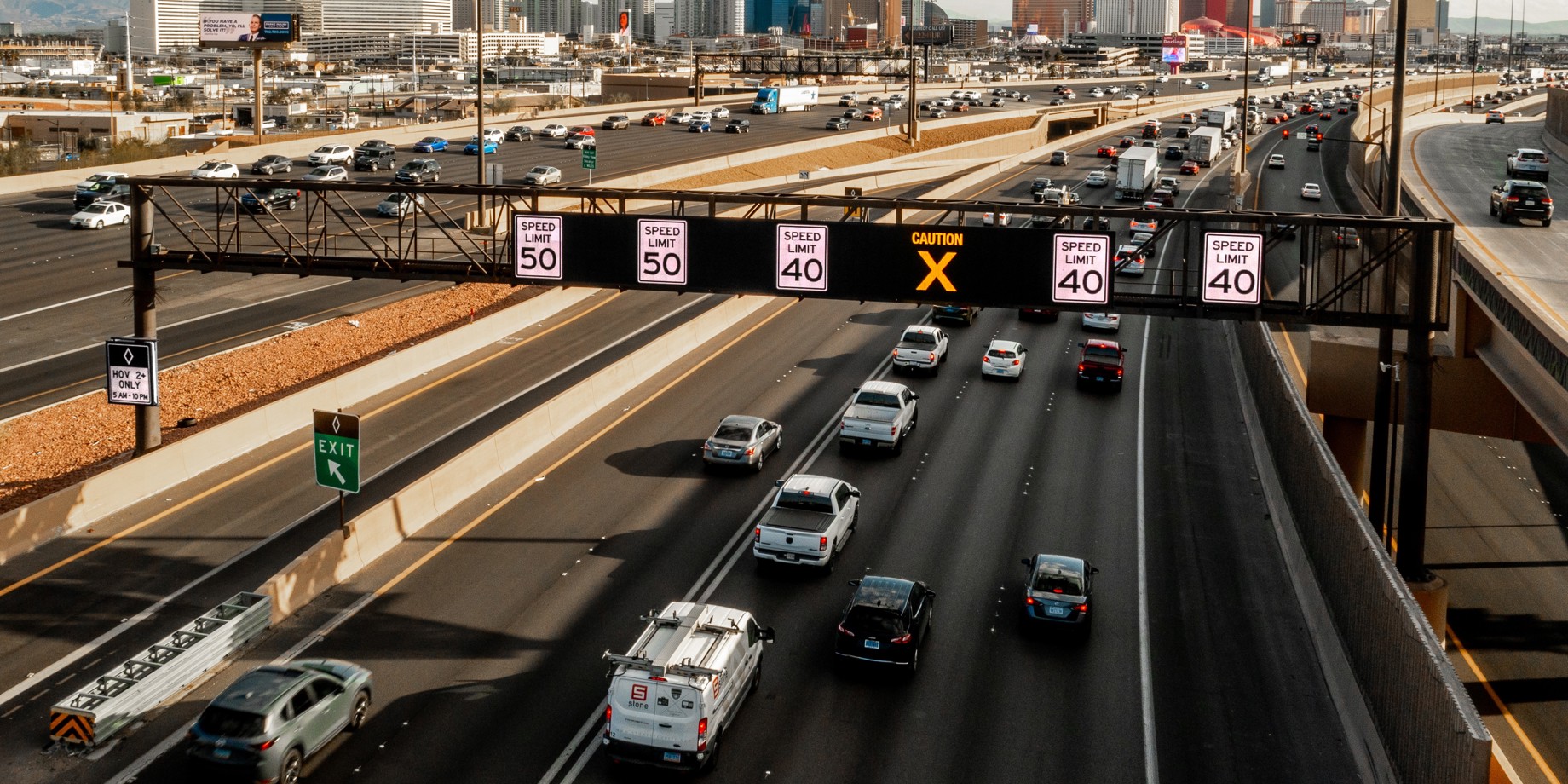Improve Traffic Flow and Safety with Dynamic Message Signs
Dynamic message signs (DMS) play a crucial role in communicating with travelers during various traffic conditions, such as changing turn lanes or traffic patterns, and switching the direction of lanes during heavy traffic times. The messaging they provide enhances traveler safety, boosts confidence in their surroundings, and improves overall traffic efficiency.
9/24/2025
Categories: Transportation

Communicate Real-Time Traffic Conditions
Changing Turn Lanes: DMS technology provides real-time updates on turn lane changes, ensuring drivers are aware of upcoming lane shifts and can adjust accordingly, preventing accidents and maintaining smooth traffic flow.
Traffic Patterns: Using DMS to display information about current traffic patterns, including congestion levels and alternate routes, informs drivers of the best routes to reduce traffic jams and improve overall traffic efficiency.

Enhance Lane Management
Switching Lane Directions: During heavy traffic times, DMS can switch the direction of lanes to accommodate increased traffic flow. For example, cities or DOTs could use reversible lanes to manage rush hour traffic, ensuring that more lanes are available for the direction with the highest demand.
Lane Closures and Openings: DMS provides timely information about lane closures and openings, guiding drivers to the appropriate lanes and reducing confusion. This is particularly useful during construction or maintenance activities.

Boost Traveler Safety and Confidence
Safety Alerts: DMS can display safety alerts, such as warnings about accidents, road hazards, and weather conditions, providing the information drivers need to make smart decisions and take necessary precautions.
Confidence in Surroundings: By providing clear and accurate information, DMS helps drivers feel more confident in their surroundings. Knowing they have access to real-time updates and guidance reduces stress and enhances the overall driving experience.

Improve Traffic Efficiency
Adaptive Traffic Management: DMS technology provides accurate messaging during changing traffic conditions to help manage traffic flow efficiently. This includes adjusting speed limits, directing traffic to alternate routes, and managing lane usage based on real-time data.
Reducing Delays: DMS helps reduce delays and improve travel times by optimizing traffic flow and providing timely information. This is essential for maintaining efficient urban mobility and ensuring that drivers reach their destinations on time.
Employ DMS for Smart City Practice
Dynamic Message Signs are an essential component of smart city infrastructure, playing a crucial role in enhancing traffic flow, improving traveler safety, and boosting confidence in their surroundings. By leveraging DMS technology, cities can create a more navigable and efficient urban environment, ensuring a smoother and safer driving experience.